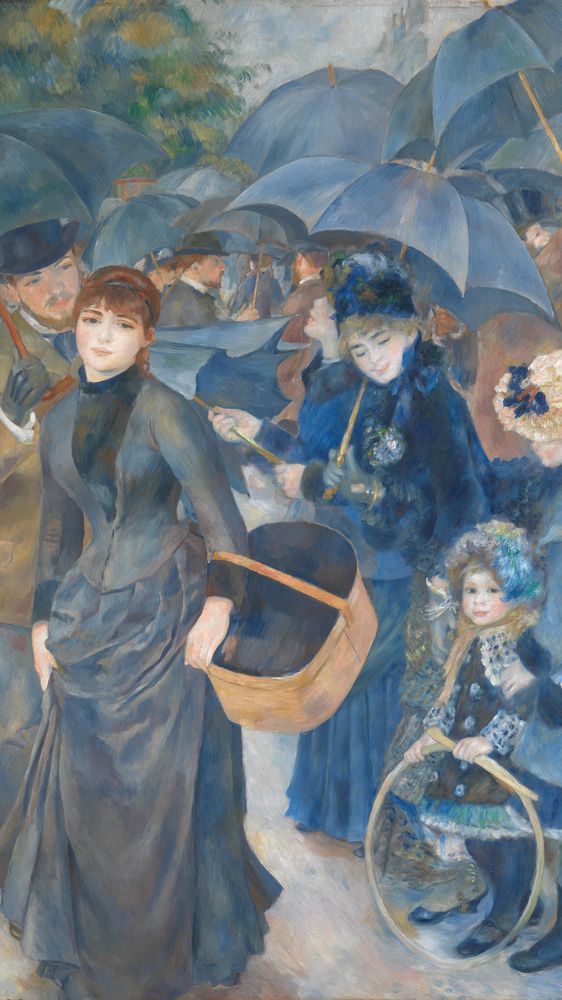The Curious Case of a Stolen Renoir
The battle over the ownership of “Paysage Bords de Seine”
Imagine you are at a flea market, rummaging around, not looking for anything in particular. You happen upon a box of paintings. All of them are small, none bigger than a piece of printer paper. You start rifling through and one catches your eye. You’re not sure why. It seems more skilled than the others, or maybe it just captures you. The price tag says $7, so you think it’s from an amateur. This is confirmed by the state of the work; you can see the some of the fabric of the canvas around the edges, where paint should be. You buy it and go home, and soon after discover the painting’s provenance; it is by none other than the French Impressionist Pierre-Auguste Renoir. Well, in 2009, this story happened to Virginia resident Marcia “Martha” Fuqua (or as the Washington Post called her, “Renoir Girl”)—at least that’s what she claimed.
First, the backstory of the painting: Paysage Bords de Seine. Apparently, in 1879, Renoir was dining with a lover, and painted it right there and then, on a linen napkin. (At least, this is what a note in the Baltimore Museum of Art’s records claims.) If this woman did exist, it is possible she was the same woman who, in 1925, sold the painting to the Bernheim-Jeune gallery in Paris for 5,000 francs ($3,000 today). Records show she was a “Madame Papillon,” possibly Alphonsine Fournaise Papillon, a model of Renoir’s who appears in his famous Luncheon of the Boating Party (the woman in the middle with the hat, leaning over the railing).
But the Bernheim-Jeune gallery was apparently just a way station for the work; they soon flipped it to the Baltimore heiress Saidie L. May and her husband, Herbert L. May, for nearly four times the price they paid. Then, in 1937, Paysage Bords de Seine was lent to the Baltimore Museum of Art. When Mrs. May passed in May of 1951, its ownership was permanently given to the museum. And here is where the story takes a turn. In the middle of November of that same year (while on display in the exhibit “From Ingres to Gauguin”), it was stolen. Given that it was in the museum’s physical possession for 14 years at this point (though, of course, not always on display), it is curious that the theft should follow so shortly after Mrs. May’s death.
Cut to 2009, when Fuqua claimed to have bought the painting at a West Virginian flea market for $7. She held onto it for a few years, and then, in 2012, brought it to The Potomack Company auction house in Alexandria, Virginia, hoping to sell it. According to the Baltimore Sun, “[Fuqua] said that the Renoir had spent several months bumping around in the trunk of her car wrapped in a white garbage bag. For a time, she said, it was in an unheated shed on a table beneath a cracked window.” What happened next is best traced by the headlines of articles written by Ian Shapira of the Washington Post, in 2013: “’Renoir Girl’ unmasked as Loudoun County’s Marcia ‘Martha’ Fuqua” in April; “Witnesses say flea-market Renoir was seen in family’s home decades ago” in May; “‘Renoir Girl’ may have been trying to sell stolen landscape painting on the sly” in December; and “‘Flea market’ Renoir ordered back to Baltimore Museum of Art by federal judge” in January of 2014. (In fact, today marks the five year anniversary of the judge’s decision.)
Though the work has had its fair share of adventure, it stands in surprisingly good condition (further making the case that Fuqua knew of its provenance all along). An appraiser values the painting somewhere between $22,000 and $100,000. Paysage Bords de Seine won’t ever be considered one of Renoir’s major works, but its backstory certainly bolsters its value (something we’ve seen before). There’s also the somewhat romantic origin story; the canvas itself, even if the mistress-dining story is apocryphal, implies the work was done on an unconventional medium, like a tablecloth, or even a bedspread.
To see the painting in person today, you can visit the Baltimore Museum of Art (assuming it’s currently on display). You might just watch as other visitor’s happen upon it, completely unaware of its provenance.



